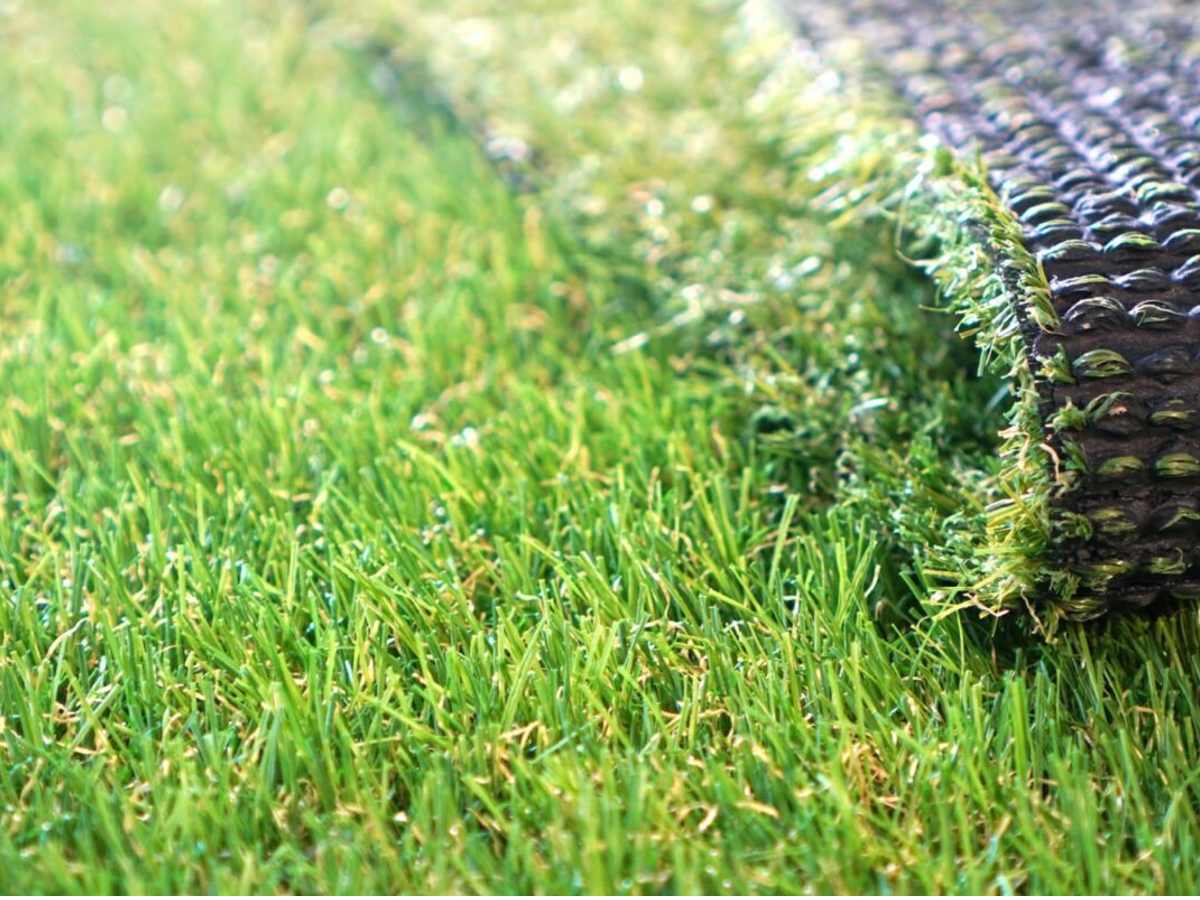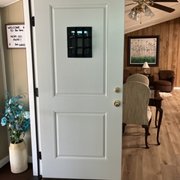Homeowners often dream of having a lush, green lawn as it not only enhances the beauty of their home but also provides a space for outdoor activities and relaxation. The answer is artificial turf installation. However, maintaining a natural grass lawn can be quite demanding. It requires regular mowing, watering, fertilizing, and dealing with pests and weeds, which can be time-consuming and often frustrating. This maintenance also comes with an environmental cost, including water usage and lawnmower emissions. Given these challenges, it’s no wonder many homeowners are seeking alternatives that offer the aesthetics of a natural lawn without intensive upkeep.
This shift in preference has led to an increased interest in synthetic lawns. Synthetic grass, often made from durable, man-made fibers, mimics the appearance of natural grass without the constant need for maintenance. It remains green and lush throughout the year, irrespective of weather conditions, and eliminates the need for watering, mowing, and fertilizing. While installing a synthetic lawn might initially seem daunting, it’s more straightforward than many homeowners realize.
Why Choose Artificial Turf?
Artificial grass presents an attractive solution for those seeking a picture-perfect lawn with minimal effort. The allure of this option lies in its simplicity and convenience. Once installed, it eradicates the need for the regular chores typically associated with natural grass. You won’t have to spend weekends watering, trimming, or weeding. This means no more wrestling with the lawn mower on hot summer days or worrying about under or over-watering during dry spells. Additionally, artificial turf installation remains unaffected by common lawn problems like patches, weeds, or pests. The constant lush, green appearance is maintained year-round, offering an aesthetically pleasing landscape without the labor-intensive upkeep.
The notion that artificial turf installations are maintenance-free is a significant draw for many homeowners. It’s a time-saving and cost-effective solution in the long run, eliminating the ongoing expenses of lawn care products and equipment. The durability of artificial grass also means it can withstand foot traffic and tough weather conditions without showing wear and tear. This resilience makes it an ideal choice for families and pet owners, as it provides a safe, clean, and evergreen play area. While requiring initial effort, the installation process is a one-time undertaking.
Choosing Toxin-Free Turf

Choosing high-quality artificial turf installation from a reputable company is a step to ensure the health and safety of ourselves, those around us, and our pets. When selecting artificial grass, opting for products free from harmful chemicals, including lead, is crucial. Lead-free turf is particularly important because it eliminates the risk of lead exposure. This consideration becomes even more significant when considering children and pets likely to spend considerable time playing on the grass.
In addition to being lead-free, it’s also important to ensure that the turf does not contain other harmful chemicals that could be leached out by rain. This aspect is crucial for environmental health. When it rains, water can pass through the artificial turf installation and carry any chemicals present into the surrounding soil and water systems. This can have detrimental effects on local ecosystems and can potentially contaminate groundwater. Therefore, selecting eco-friendly turf from a reliable supplier is vital to being environmentally responsible.
Tools for Artificial Turf Installation
When hiring a company for artificial turf installation, understanding the tools and materials involved can be beneficial. This knowledge helps ensure that the installation is carried out efficiently and provides insight into the work’s quality and thoroughness.
Geotextile Weed Barrier: This is a crucial component of the installation process. A geotextile weed barrier is laid down before the turf is installed. Its primary function is to prevent weeds from growing up through the turf. This barrier is permeable, allowing water drainage while blocking sunlight and weeds.
Turf Cutter: A turf cutter is used at the beginning of the installation process to remove existing grass or vegetation and to level the ground. This tool ensures a smooth, even base for the artificial turf to be laid upon.
Stanley Knife: This utility knife cuts the artificial turf to the desired shape and size. It’s essential for precise cuts, especially around edges, corners, and obstacles like trees or posts.
Tape and Glue: These materials are used to join artificial turf sections. The tape is placed beneath the edges of adjoining turf pieces, and the glue is applied to the tape to secure the seams. This step is crucial for achieving a seamless look across the lawn.
Understanding these tools and their purposes can give you a clearer picture of the installation process. It also enables you to engage more knowledgeably with the installation team, ensuring that the work meets your expectations. Additionally, knowing the process helps ensure that the company you hire uses the appropriate tools and techniques for a professional and durable installation.
How to Prepare the Ground for Artificial Turf Installation
Preparing the ground properly is critical in ensuring a successful artificial turf installation. Achieving a level and durable lawn of artificial grass depends largely on the quality of this groundwork. Here are the key steps to prepare the ground:
Remove Topsoil and Debris: The first step is to remove the top layer of soil. This layer often contains organic matter that can decompose over time, creating an uneven surface. Removing this layer helps in creating a stable base for the artificial turf. Additionally, clear any debris, rocks, or roots that could cause bumps or irregularities in the lawn surface.
Weed Prevention: It’s important to ensure that the area where the turf will be installed is free from weeds. Weeds can grow through the turf over time, disrupting its surface and appearance. Applying a weed killer or installing a geotextile weed barrier can help prevent weed growth beneath the turf.
Level and Compact the Ground: Once the topsoil is removed, the next step is to level the ground. This can be done using a rake and a spirit level. Ensuring the ground is level is crucial for a uniform appearance of the artificial turf installation. After leveling, the ground should be compacted to provide a solid base. This can be achieved with a roller or a vibrating plate compactor.
Add a Sub-base Layer: A sub-base layer of crushed stone or gravel is spread over the compacted soil. This layer provides a smooth, permeable surface for the turf and aids in drainage. The thickness of the sub-base can vary depending on the turf specifications and usage.
Final Leveling and Compacting: After adding the sub-base, it should be leveled and compacted like the soil beneath it. This ensures a flat foundation supporting the artificial turf and preventing sagging or wrinkling over time.
Following these steps, you can create a well-prepared base for your artificial turf installation. This groundwork contributes to the lawn’s aesthetic appeal and enhances its longevity and durability.

How to Make Artificial Turf Comfortable During the Summer
Artificial lawns can become too hot for your children or pets to play on during very hot days. Temperatures on the turf can go as high as 150 degrees F. This is quite uncomfortable. We need to address this problem during the installation.
The solution primarily lies in the choice of materials. Selecting a lighter color of turf and infill will help keep the temperature down. Moreover, you should also avoid using rubber infills.
How Artificial Grass Tile is Installed
- We compact the sand to make the ground firm enough for installation.
- We install the turf with the edging down.
- We carefully unroll it.
- The pile should lean towards the direction of the house to give it a natural look.
- Cut and trimmed the edges.
- The turf is joined together.
- Finally, finishing nails and common nails and used to pin them in place.
Schedule Your Consultation Today
Hire a professional for artificial turf installation. Ensure that you choose a high-quality turf manufactured by a reputable company. This will ensure a soft, natural look. Ameriside installs the most thoroughly researched and tested artificial grass in the country. Tired of lawn maintenance and a high water bill? Call us at (800) 599-8124, or check out our gallery online.
Frequently Asked Questions
How Long Does Artificial Turf Installation Last, and What Is Its Maintenance Like?
High-quality artificial turf can last to 15 years or more with proper care. Maintenance typically involves regular brushing to keep the blades upright and occasional rinsing to remove debris. Unlike natural grass, there’s no need for mowing, watering, or fertilizing.
Does Artificial Turf Get Hot if Exposed to the Sun?
Artificial turf can become warm in direct sunlight but is generally not excessively hot. Some manufacturers incorporate cooling technology into their products to reduce heat buildup. You can also hose it down to cool the surface on hot days.
Is Artificial Turf Pet-Friendly?
Yes, artificial turf is pet-friendly. It’s easy to clean, and pet waste can be easily removed and rinsed away. Many pet owners find it a great alternative to natural grass, which can get muddy and worn down by pets.
Are There Any Environmental Concerns with Artificial Turf Installation?
While artificial turf conserves water and reduces the need for chemicals, it is made from synthetic materials, primarily plastic. Some environmental concerns include the disposal of old turf and the use of non-renewable resources in its production. However, newer eco-friendly options are emerging.
Can I Install Artificial Turf on Any Type of Soil?
Artificial turf can be installed on various soil types, but proper ground preparation is crucial. It’s essential to ensure good drainage and a stable base. Clay soils may require additional measures to prevent drainage issues.
Is Artificial Turf Suitable for High-Traffic Areas, such as a Backyard Playground?
Yes, artificial turf is excellent for high-traffic areas. It’s durable and can withstand heavy use without becoming worn or patchy. It’s an ideal choice for playgrounds, sports fields, and other areas with lots of activity.
Can I Install Artificial Turf on the Sloped Surface?
Yes, you can install artificial turf on a sloped surface, but it requires special attention to ensure proper drainage and stability. Professional installation is often recommended for sloped areas.
Reference



























